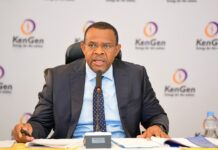Cancer represents a tremendous public health challenge across the globe. According to World Health Organization data, about 9.6 million cancer deaths occur worldwide every year. In Kenya, cancer is the third-leading cause of death after infectious and cardiovascular diseases. Despite major leaps in diagnosis and treatment, current IARC projections suggest that one in 5 people worldwide will develop cancer during their lifetime and that the global cancer burden is projected to rise by about 50% over the next 20 years. In Kenya, a rising number of people are affected by cancer in their lifetime, either by being diagnosed or seeing a member of their family diagnosed. But there is hope.
The Nairobi Radiotherapy and Cancer Center (NRCC) in the heart of Kilimani has touched the lives of many people in their fight against Cancer. Since inception in 2005, NRCC has made a mark in the local healthcare sector as one of the leading medical facilities for comprehensive cancer treatment in Kenya.
“With a highly specialized and experienced staff, we provide integrative and personalized cancer care to make you feel better and live with hope,” says Ann Waita, co-founder and chief executive Officer of NRCC. She adds that NRCC’s commitment to patients goes beyond the provision of treatment. “We remain deeply engaged with them, offering unwavering support and care throughout their journey. It’s imperative to emphasize that our compassionate approach is not limited to the patient alone; we extend our steadfast support to their caregivers, recognizing the profound impact of cancer on the entire support network.”
NRCC provides a range of services including Oncology Consultations, Day Chemotherapy Infusions, Targeted Cancer Therapies, Blood Transfusions, Pharmacy and Laboratory. Others are Nutrition, Diet & Counseling. The medical facility also offers radiotherapy as an option for treatment of keloids that cannot be surgically removed. Mrs. Waita says it is an effective treatment method for the prevention of keloid recurrence without serious adverse effects.“Have you ever seen those peculiar growths that people sometimes get after shaving? Those unsightly bumps, often blue, that can appear anywhere on the body? We treat those growths, commonly known as keloids, through superficial radiation,” she explains.
For the last 19 years, NRCC has emerged as the go-to Radiotherapy and Cancer center for most people in the battle against cancer. The facility has extended its tentacles beyond Nairobi, and now serves the larger Mount Kenya region through its Nyeri and Embu treatment centers.
Rise from humble beginnings
The NRCC might be a citadel of cancer care in Kenya and beyond, but this has not always been the case. 19 years ago, Mrs. Waita and her partner started it as a side hustle in Nairobi’s Kilimani estate.
In a small room, they started with a radiotherapy machine that they could use to treat keloids. Within no time, they realized there was virtually no competition for the service, noticing an opportunity to fill that gap.
With a vision to become a leading radiotherapy center, they embarked on their entrepreneurial journey, with a focus on superficial radiotherapy. “We started in a garage in Hurlingham.”
As their customer base grew, their business thrived and soon, it outgrew the garage space. In 2007, they acquired another machine and moved to Upperhill Medical Center. The business grew tremendously within a short time, and the founders then embarked on an expansion drive, extending their services beyond superficial radiotherapy. As the demand for deep therapy treatment grew, NRCC made a significant leap forward by acquiring 250Kv Orthovoltage equipment in October 2008. This technological advancement allowed them to provide both superficial treatment (SXT) and deep therapy treatment (DXT), addressing cancerous tissues on the skin’s surface and deep within the body. In 2009, the company rebranded to Nairobi Radiotherapy and Cancer Center in line with its broader vision. With the growth, Ms. Anne decided to quit her job and join the facility as General Manager. She has never looked back.
The cancer burden
Treating and managing cancer is an expensive affair. Various data on patients with cancer and service providers in Kenya points to medical costs as a significant barrier to accessing testing and treatment services for all types of cancers. The same data shows that patients covered under the National Health Insurance Fund (NHIF) were more likely to complete treatment as compared with those without insurance.
To serve more people, NRCC is NHIF accredited. Mrs. Waita says that the biggest pain point for patients is the financial burden, adding that the NHIF gives hope to thousands of patients who could not have afforded quality care using out-of-pocket payments. “We understand that the out-of-pocket expenses can prove insurmountable for many patients. Our key aim is to address any financial obstacle early in the treatment process to allow us to deliver top-tier, yet affordable, healthcare.”
Not enough oncologists
Kenya, with its 50 million population, heaves under the pressure of diagnosing and treating cancer. According to the National Cancer Institute of Kenya, there are only 27 radiotherapy centers around the country, with most of these located in major towns.
To put this into perspective, a cursory search of the official Kenyan medical practitioners’ database shows less than 100 oncologists are serving 54 million Kenyans in 2022, translating to an oncologist-to-patient ratio of 1:540 000.
According to The Lancet Oncology Commission on cancer in sub-Saharan Africa, the rapidly escalating cancer burden in resource-poor countries like Kenya is alarming. Long affected by infectious diseases and malnutrition, the population in Kenya and other African nations is now increasingly afflicted by non-communicable diseases, including cancer. ”The demand for radiotherapy and
Chemotherapy services is high, yet there are not enough oncologists to attend to around 47000 new cancer cases annually,” she says.
At the facility level, entrepreneurs have the challenge of raising the necessary capital to scale. Mostly, facilities depend on personal funds or immediate payments from authorities and insurance companies to grow, which is unsustainable.
To overcome such funding challenges, NRCC is exploring the possibility of partnering with private equity firms, a strategic move that could see it expand its services while providing affordable and accessible cancer care to those in need.
Currently, Mrs Waita says that the facility has installed a Nuclear Medicine machine, a major milestone that will see it serve a greater number of people efficiently and effectively.
Nuclear medicine uses radioactive material inside the body to see how organs or tissues are functioning (for diagnosis) or to target and destroy damaged or diseased organs or tissue (for treatment).
Nuclear medicine is used to treat various health conditions. These include hyperthyroidism, thyroid cancer, lymphomas, and bone pain due to certain cancers. Unlike other radiation applications for medical use, nuclear medicine uses open (unsealed) sources of radiation. The
The tracer is introduced into the body of the patient through several routes (oral, intravenous, percutaneous, intradermally, inhalation, intracapsular) and the patient becomes the source of radiation.
This radiation in the patient can then be detected (for
Diagnostic use) or used to kill some selected unwanted body cells such as cancer cells (therapeutic use).
“The nuclear medicine machine which we launched in 2023 is a game changer for us. It will help us diagnose most ailments faster and treat them accordingly,” says Mrs. Waita.
All under one roof.
Conventionally, cancer is treated in isolation, and patients are taken through any of the three modalities of treatment including surgery, radiotherapy or chemotherapy.
However, as Mrs. Waita explains, sometimes cancer patients grapple with other health issues like diabetes and hypertension. Her facility handles all these health issues under one roof, minimizing costs. “The conventional practice of treating cancer in isolation and then directing the patient to separate facilities for other health concerns not only escalates costs but also consumes valuable time.”
Technology transforming healthcare
The healthcare entrepreneur acknowledges the role of technology in transforming medical care, the reason her facility has invested in top of the range radiotherapy treatment. “Technological advancements are reshaping the landscape of cancer treatment and the broader medical field. We are steadfast in our dedication to investing in technology and nurturing collaborative relationships with fellow medical centers,” she says.
Like most equipment in the healthcare sector, radiotherapy equipment is costly and requires a significant capital investment. This explains why there are few medical facilities specializing in the field of oncology in Kenya.
For Mrs. Waita, a consummate entrepreneur with the right mix of entrepreneurial traits to solve problems, acquiring such equipment hasn’t been an easy ride. She has entered into leasing partnerships with several equipment manufacturers. “We have the option to enter into rental agreements, which allow us to maintain financial flexibility and ensure our equipment remains up-to-date with the latest technological advancements.”
To get the best for her facility, Mrs. Waita says she collaborates with many equipment manufacturers and suppliers as there is no one-size-fits-all when it comes to equipment suppliers.
This model allows her to concentrate on what she knows best, availing quality, compassionate care.
To do this, she depends on a cohesive team of highly trained professionals that works together in harmony. “I appreciate my team every day for their unwavering commitment to caring for very sick patients with compassion and a smile. They make the challenging work look effortless, and I am truly grateful for their dedication.”
She empowers her staff by continuously investing in their training and career development. By so doing, she’s certain of better patient care and improved outcomes. “Fostering a culture of learning and growth is not only beneficial to our team but also vital for our business as it allows us to create more partnerships and collaborations within the healthcare community.”
Safety net
Radiation therapy uses high doses of radiation to kill cancer cells and shrink tumors. At low doses, radiation is used in x-rays to see inside your body, as with x-rays of your teeth or broken bones.It’s a complex world where precision is needed as mistakes can be deadly for both professionals and patients.NRCC understands the risks associated with radiotherapy and has invested in building a protective shell as a safety net for professionals and patients, as per international best practices.
“First, all the walls housing our equipment are constructed with lead, which is a standard procedure to contain radiation,” she says, adding that the facility works closely with a dedicated team responsible for quality assurance and safety. “This team conducts regular checks to ensure that there are no leaks or irregularities in the radiation shielding, which is essential for both the community and our team.”
Mrs. Waita says that NRCC goes a step further to safeguard its team against any risks.
Other than the structural integrity of shielding the walls with lead, all her staff in the radiation rooms wear a dosimeter badge. The dosimeter badge measures the amount of radiation exposure an individual receives. It’s an unobtrusive badge that tracks the radiation dosage each employee encounters during their noble work of saving lives.
“At the end of each month, these dosimeters are sent to a partnering institution which thoroughly reviews and checks the radiation exposure levels for each person. This process ensures that everyone working with the equipment is within the recommended dosage limits and adheres to safety standards. We maintain meticulous records for each month and compile annual reports, which are crucial in retaining our license to operate.”
Corporate social responsibility
According to Investopedia, Corporate Social Responsibility (CSR) increases customer retention and loyalty, increases employee engagement, improves brand imaging, attracts investment opportunities and top talent, and makes a difference to bottom-line financials.
Looking at NRCC’s CSR programs, it’s easy to see that the center is dedicated to the broader mission of raising awareness and promoting a healthy lifestyle within the community. “Our aim is to inspire individuals to proactively seek healthcare, engage in screening, and make lifestyle choices that contribute to their overall well-being. “
Way forward
While there are many gaps in cancer diagnosis, treatment and care, Mrs. Waita is optimistic that Kenya is taking a significant step towards battling the disease. She is happy to see more professionals specializing in oncology to bolster the human resource capacity for cancer care.
As a health-preneur, she is committed to scaling her facility to the highest level of excellence, positively impacting communities and beyond. “Our desire is to streamline our operations to provide our patients with the best possible care.”


















